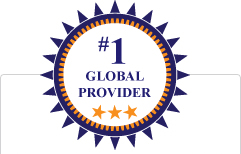...
How would you like to be a Guest Blogger for KMI? Email us at: info@kminstitute.org and let us know your topic(s)!
Top 5 Knowledge Management Practices to Maximize ROI
How does one measure something so seemingly unquantifiable as knowledge? How can the knowledge management branch within an organization demonstrate their success to the rest of the organization? There are no direct, obvious metrics to quantify success or failure within the field of knowledge management. This raises the question -- will an organization ever be able to tell if they are succeeding with knowledge management? Will they continue to invest without knowing the outcome, possibly wasting valuable resources?
Although the success of a knowledge management enterprise may not be quantifiable in terms of hard numbers that can be crunched, there are five critical success factors on which knowledge management initiatives depend:
1. Formal Business Architecture Analysis
Answers the question “does the knowledge management initiative align with the goals of the organization?”
Consists of conducting an analysis of the business of the knowledge management enterprise and producing or growing a business architecture that will meet the needs of the enterprise.
2. Knowledge Management Maturity Model
A knowledge management maturity model which has an accompanying metrics structure is essential to measuring progress towards the goal of the organization.
3. Logical Framework or “Logic Model”
Measures the value and efficacy of social programs.
Provides a method of discussing every aspect of a situation: the problem, solution, all assumptions made, or any external factors.
Helps to illustrate a strategic plan, and can be used on a piece of the strategy, or on the strategy as a whole.
4. Integrated KM toolset
Knowledge management has a very specific set of tools available in a wide range of domains.
An integrated toolset means that there is seamless integration among the domains that the organization has chosen to fit their needs, ensuring a comprehensive strategy.
Ensures that the organization has developed a toolset which is focused on their knowledge management goals.
5. Leadership or Management Buy-in
This last factor is critical to receiving the resources needed to succeed in knowledge management. If those in the leadership of the organization are not on board, the resources needed will likely not be provided.
These five factors are critical to achieve your organization’s goals in knowledge management. The KM Institute has the tools to help you achieve them, through our globally recognized training and certification programs. Contact us today to get started on the path of success!
RECENT POSTS
...









 ...
...
